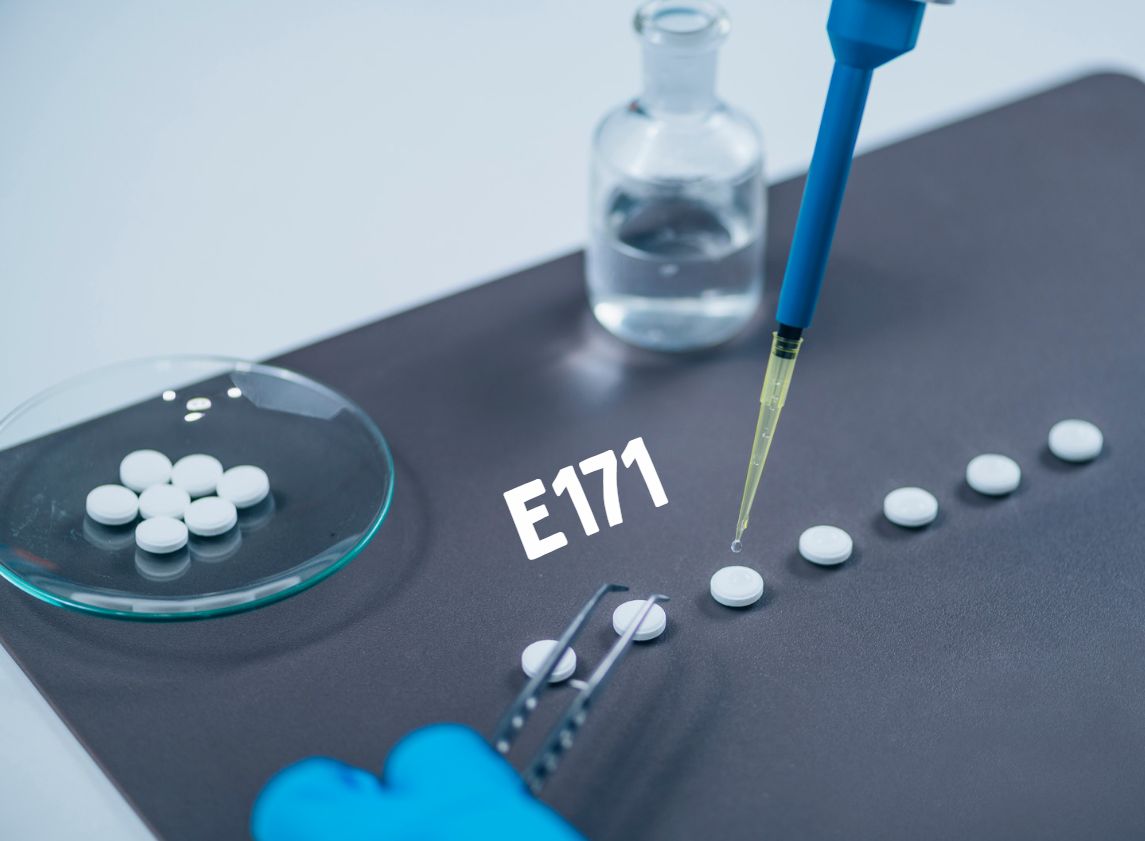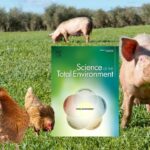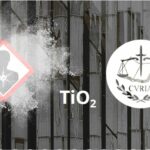
Authorization of E171 in medicines “should be maintained”, at the request of pharmaceutical companies
On August 6, the European Commission announced that the authorization of titanium dioxide (E171) in medicines should be maintained, as requested by numerous pharmaceutical companies and their federations. The latter argued that this white colorant, widely used as an excipient in a large number of medicinal products, would be irreplaceable. This announcement comes six months behind schedule… and on the eve of the date on which AVICENN had warned that it would appeal to the European Court for a declaration of failure to act. What about numerous potential adverse effects associated with the ingestion of E171? Deemed serious enough by EFSA to lead to the ban on E171 in food several years ago, they have not been thoroughly re-examined by the European Medicines Agency (EMA).
The authorization of E171 as a colorant in medicinal products should be maintained : the European Commission’s position was published on August 6 in a Staff Working Document.
A decision 6 months overdue
At the beginning of 2022, in the regulation banning the additive E171 in food1Following the EFSA opinion recognizing that the safety of E171 could not be established, cf. Titanium dioxide: E171 no longer considered safe when used as a food additive, EFSA, May 6, 2021 ; see also our info sheet The ban on TiO2 (E171) in food, AVICENN @VeilleNanos, the European Commission had given pharmaceutical laboratories three years to deploy “any possible efforts to accelerate the research and development of alternatives” to replace this very common excipient in medicines2Cf. recital 17 of European Regulation 2022/63, European Commission, January 2022. It also committed to decide, by early 2025, whether or not to extend the authorization of E171 in medicinal products3Cf. recital 18 and article 3 of European Regulation 2022/63, European Commission, January 2022. The three-year deadline set by the European Commission ran from the twentieth day following the date of publication in the Official Journal of the European Union of January 18, 2025, i.e. February 7, 2025..
Nevertheless, the Commission was so slow to make its position known that AVICENN and Sylvie Gillet, a patient forced to ingest a dozen tablets a day (an estimated daily dose of 18 mg of E171, which is about ten times higher than that of the general population4Cf. Exposure assessment of titanium dioxide via drugs available on the French market: A nationwide descriptive study, Cairat M, Huybrechts I, Fournier A, Therapies, 79(6) : 718-729, November – December 2024), sent, on June 7, an “invitation to act” to the European Commission5E171 in pharmaceuticals: when will the European Commission end its silence?, AVICENN @VeilleNanos, June 12, 2025. The deadline expired on August 7, and we were about to lodge an action for failure to act, since the Commission had not honored its commitments, when, on the eve of the deadline, the European Commission broke its silence…
A decision based on the arguments of pharmaceutical companies
The European Commission supposedly defined its position on the basis of a report sent by the European Medicines Agency (EMA) in April 20246Cf. Feedback from European Medicine Agency (EMA) to the EU Commission request to evaluate the feasibility of alternatives to replace titanium dioxide (TiO2) in medicinal products and its possible impact on medicines’availability, European Medicines Agency (EMA), April 2024. AVICENN had requested it on several occasions, but without success. It was only made public at the same time as the Commission document, on August 6. It endorses the arguments put forward by pharmaceutical companies and their federations in a 569-page document7Use of titanium dioxide as excipient in human and veterinary medicines and identification of alternatives, Industry feedback to GWP experts/EMA questions, EFPIA, TiO2 Alternatives Consortium, Medicines for Europe, AESGP, Animal Health Europe, Access Vetmed, IPEC Europe, EUCOPE, February 2024 of February 2024, according to which E171 is indispensable to the efficacy and safety of medicines; no alternative currently exists to replace it, and the removal – without replacement – of E171 would only be possible in less than 5% of cases*. The timeframe of seven to twelve years suggested as of 2025 is the same as that suggested by the same players in… 20218Use of titanium dioxide as excipient in human medicines – Industry feedback to QWP experts/EMA questions, AESGP, EFPIA , Medicines for Europe, July 2021 – an argument that the EMA had already taken at face value at the time9Final feedback from European Medicine Agency (EMA) to the EU Commission request to evaluate the impact of the removal of titanium dioxide from the list of authorised food additives on medicinal products, EMA, September 2021; see the article Interdiction du dioxyde de titane – Coup de frein de l’Agence européenne des médicaments, Que Choisir, 2021.
What about the risks for patients?
As mentioned in our June article10E171 in pharmaceuticals: when will the European Commission end its silence?, AVICENN @VeilleNanos, June 12, 2025, the first alerts on ingestion of E171 or titanium dioxide nanoparticles are more than fifteen years old now11See for example Titanium dioxide nanoparticles induce DNA damage and genetic instability in vivo in mice, Trouiller et al., Cancer Research, 69(22), 2009; Interaction Between Nano-Anatase TiO2 and Liver DNA from Mice In Vivo, Li, N et al, Nanoscale Res Lett, 5, 108, 2010; … and, as early as 2017, Que Choisir called for a ban “if the slightest doubt remains as to the safety of this compound”12Colorant E171 : Les médicaments aussi!, Que Choisir, February 4, 2017. However, in 2021, the European Food Safety Agency (EFSA) confirmed the existence of observations highlighting possible adverse effects linked to E171 and/or the titanium dioxide nanoparticles it may contain13Scientific opinion on the safety assessment of titanium dioxide as a food additive (E171), EFSA, 2021. In an article we reported on in March 202314Nanos in medicines and healthcare products: recommendations for better regulation, AVICENN @VeilleNanos, March 2023, the Scientific Advisory Board of the French national medicines agency (ANSM) had also indicated that “the interest of nanoscale excipients (…) must be analyzed considering the potential risks and uncertainties related to the nanoscale“.
And yet, as stated in the European Commission document, “the EMA considered any carcinogenicity risk resulting from exposure to titanium dioxide in medicines to be negligible, given the combination of the small quantities involved and the pharmaceutical-grade quality used. This conclusion is based on the limited set of data submitted by the industry consortium and not on a comprehensive review by the EMA of all available data“.
→ What could possibly justify such a lax evaluation process?
Not all patients are in the same situation: some are exposed not to small but to large quantities, and these are often the most fragile (immunocompromised patients, patients with chronic pathologies requiring them to take multiple medications daily for years on end, etc.).
As for the risks to patients, they cannot be reduced to the sole risk of carcinogenicity; other risks, far from being ‘negligible,’ also exist inflammation and alterations to immunity, reproduction and neurodevelopment, risks of DNA damage, even at low doses, digestive system disorders, etc.15See Scientific opinion on the safety assessment of titanium dioxide as a food additive (E171), EFSA, 2021, the list of recent publications on adverse effects associated with the ingestion of TiO2 or E171 compiled by AVICENN and our fact sheet on Risks associated with the ingestion of titanium dioxide nanoparticles on veillenanos.fr.
What are the public authorities doing?
With French researchers recently revealing the widespread presence of titanium dioxide nanoparticles in all human, animal and industrial milks tested16Titanium dioxide nanoparticles found even in human, animal and infant milks, AVICENN @VeilleNanos, July 23, 2025, a response from French and European health authorities is all the more urgent.
A petition launched last March on the MesOpinions.com platform calling on the French Ministry of Health and the European Parliament to “ban titanium dioxide in medicines” has attracted nearly 20,000 signatures to date.
At the very least, we need more in-depth studies on the risks incurred by the patients most at risk, as well as stronger incentives for pharmaceutical laboratories to speed up the phase-out of E171, or even – in cases where only a colorant or opacifier is absolutely necessary – to find safe and effective alternatives.
→ In the next few weeks, AVICENN will be analyzing possible avenues and levers for asserting the precautionary principle17Article 191 §2 of the Treaty on the Functioning of the European Union (TFEU) and the principle of protecting human health18Article 168 of the Treaty on the Functioning of the European Union (TFEU ) enshrined in the Treaty on the Functioning of the European Union. If you are interested, please contact us at contact@veillenanos.fr!
* For some pharmaceutical references, there are drugs with the same active substance but without E171: consult the public drug database19The composition is detailed towards the bottom of the 3rd tab entitled “notice” or contact your pharmacy and write to us for more information.
NB: among the patients reading this, those who have to take a heavy, chronic medication consisting of drugs containing E171 are obviously advised to continue their treatment.

Other nano-related news
Next nano events

- Webconference for analysis laboratories, plant fertilizer manufacturers and distributors, public authorities…
- Moderated by David Krupka, nanotechnologies development manager at AFNOR Normalisation and Emilie Langlois-Bertrand, nantechnologies standardization project manager.
- In partnership with Armand Masion, CNRS Research Director, and Sandrine Mocoeur, Health, Safety, Environment and Quality Manager at SYNGENTA.
- This exchange will also be an opportunity to explore the creation of a national platform to identify standardization needs.
- Website: www.afnor.org/evenement/nanotechnologies-agriculture-cadre-pratique-responsable/
- 8th Congress of Occupational Medicine and Health (CNMST 2026)
- Theme 5: Emerging pathologies and risks, Mr Henri Bastos (ANSES), Pr Lynda Bensefa-Colas (AP-HP), Dr Catherine Nisse (CHU Lille)
- Website: www.medecine-sante-travail.com
- 20th meeting of the “nano and health” dialogue committee
- Organizer: ANSES
Notes and references
- 1Following the EFSA opinion recognizing that the safety of E171 could not be established, cf. Titanium dioxide: E171 no longer considered safe when used as a food additive, EFSA, May 6, 2021 ; see also our info sheet The ban on TiO2 (E171) in food, AVICENN @VeilleNanos
- 2Cf. recital 17 of European Regulation 2022/63, European Commission, January 2022
- 3Cf. recital 18 and article 3 of European Regulation 2022/63, European Commission, January 2022. The three-year deadline set by the European Commission ran from the twentieth day following the date of publication in the Official Journal of the European Union of January 18, 2025, i.e. February 7, 2025.
- 4Cf. Exposure assessment of titanium dioxide via drugs available on the French market: A nationwide descriptive study, Cairat M, Huybrechts I, Fournier A, Therapies, 79(6) : 718-729, November – December 2024
- 5E171 in pharmaceuticals: when will the European Commission end its silence?, AVICENN @VeilleNanos, June 12, 2025
- 6
- 7Use of titanium dioxide as excipient in human and veterinary medicines and identification of alternatives, Industry feedback to GWP experts/EMA questions, EFPIA, TiO2 Alternatives Consortium, Medicines for Europe, AESGP, Animal Health Europe, Access Vetmed, IPEC Europe, EUCOPE, February 2024
- 8Use of titanium dioxide as excipient in human medicines – Industry feedback to QWP experts/EMA questions, AESGP, EFPIA , Medicines for Europe, July 2021
- 9Final feedback from European Medicine Agency (EMA) to the EU Commission request to evaluate the impact of the removal of titanium dioxide from the list of authorised food additives on medicinal products, EMA, September 2021; see the article Interdiction du dioxyde de titane – Coup de frein de l’Agence européenne des médicaments, Que Choisir, 2021
- 10E171 in pharmaceuticals: when will the European Commission end its silence?, AVICENN @VeilleNanos, June 12, 2025
- 11See for example Titanium dioxide nanoparticles induce DNA damage and genetic instability in vivo in mice, Trouiller et al., Cancer Research, 69(22), 2009; Interaction Between Nano-Anatase TiO2 and Liver DNA from Mice In Vivo, Li, N et al, Nanoscale Res Lett, 5, 108, 2010; …
- 12Colorant E171 : Les médicaments aussi!, Que Choisir, February 4, 2017
- 13
- 14Nanos in medicines and healthcare products: recommendations for better regulation, AVICENN @VeilleNanos, March 2023
- 15See Scientific opinion on the safety assessment of titanium dioxide as a food additive (E171), EFSA, 2021, the list of recent publications on adverse effects associated with the ingestion of TiO2 or E171 compiled by AVICENN and our fact sheet on Risks associated with the ingestion of titanium dioxide nanoparticles on veillenanos.fr
- 16Titanium dioxide nanoparticles found even in human, animal and infant milks, AVICENN @VeilleNanos, July 23, 2025
- 17Article 191 §2 of the Treaty on the Functioning of the European Union (TFEU)
- 18Article 168 of the Treaty on the Functioning of the European Union (TFEU )
- 19The composition is detailed towards the bottom of the 3rd tab entitled “notice”




